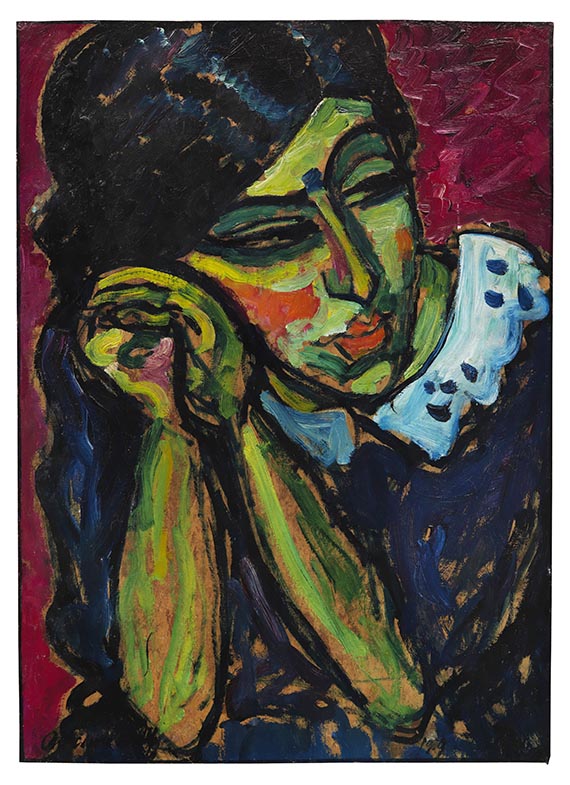Dictionary


Verre églomisé
Verre églomisé is a form of painting on glass. However, the painting is not done on the front of the sheet of glass but rather on the back in mirror-image and in colors that are not transparent. In verre églomisé painting the outlines are usually laid down first, then filled in and finally the background is painted. Various media are used in verre églomisé painting, nowadays mainly acrylic paints. Gold leaf and tin foil have also been frequently used. Etching behind glass is a technique in its own right. The glass is tinted or blackened with soot and the motifs are scratched out. A verre églomisé masterpiece is a 4th-century portrait of a woman with two children (Brescia, Museo Civico). The earliest medieval verre églomisé paintings date from the 14th century. In the 16th century verre églomisé painting spread from Italy to Central Europe. From the 18th century it became a vernacular mass medium for the dissemination of devotional images, known as tinsel paintings - made mainly by large peasant families during the long dreary winter months. In Sandl, Austria, alone up to twenty thousand tinsel paintings were produced each winter season during the 19th century. Other centres known for tinsel paintings are places such as Buchers, Schwertberg and Karlstift in the Waldviertel near the Austro-Hungarian glassworks. Primarily devotional images featuring religious motifs, these tinsel paintings were sold by itinerant vendors of such wares known generally as "pedlars" and were usually placed in domestic and wayside chapels or in the shrines reserved in many homes for private devotions. They were also sold at places of pilgrimage. In Expressionism the old tinsel painting technique was revived by Wassily Kandinsky and Franz Marc. In the 1970s verre églomisé painting underwent a renaissance in Hungary when naïve tinsel paintings again became popular.
Verre églomisé is a form of painting on glass. However, the painting is not done on the front of the sheet of glass but rather on the back in mirror-image and in colors that are not transparent. In verre églomisé painting the outlines are usually laid down first, then filled in and finally the background is painted. Various media are used in verre églomisé painting, nowadays mainly acrylic paints. Gold leaf and tin foil have also been frequently used. Etching behind glass is a technique in its own right. The glass is tinted or blackened with soot and the motifs are scratched out. A verre églomisé masterpiece is a 4th-century portrait of a woman with two children (Brescia, Museo Civico). The earliest medieval verre églomisé paintings date from the 14th century. In the 16th century verre églomisé painting spread from Italy to Central Europe. From the 18th century it became a vernacular mass medium for the dissemination of devotional images, known as tinsel paintings - made mainly by large peasant families during the long dreary winter months. In Sandl, Austria, alone up to twenty thousand tinsel paintings were produced each winter season during the 19th century. Other centres known for tinsel paintings are places such as Buchers, Schwertberg and Karlstift in the Waldviertel near the Austro-Hungarian glassworks. Primarily devotional images featuring religious motifs, these tinsel paintings were sold by itinerant vendors of such wares known generally as "pedlars" and were usually placed in domestic and wayside chapels or in the shrines reserved in many homes for private devotions. They were also sold at places of pilgrimage. In Expressionism the old tinsel painting technique was revived by Wassily Kandinsky and Franz Marc. In the 1970s verre églomisé painting underwent a renaissance in Hungary when naïve tinsel paintings again became popular.
Offers




